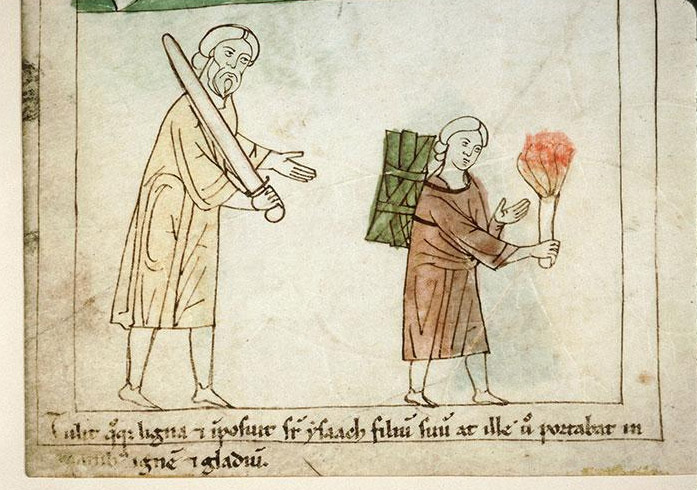Looking good, 900 years later: Pamplona Bible manuscript dated back to 12th century
- Heather Dean

The age of a manuscript fragment from the Sandra Mattia Collection in UVic Libraries' Special Collections-depicting Abraham about to sacrifice his son Isaac-has been re-assessed, making the fragment among the oldest manuscript fragments in the collection.
When Sandra Mattia first donated the manuscript fragment to Special Collections in 2010, prominent medievalist and former UVic faculty member Dr. Erik Kwakkel initially dated the fragment to the 15th century. However, he now believes the fragment likely dates to the late 12th or early 13th century. Dr. Kwakkel identified a manuscript with an almost identical illustration in a volume at the Bibliothèque Centrale Louis-Aragon, a municipal library in Amiens, France.
This discovery helps uncover the fragment's origins in Pamplona, Spain, and suggests that the fragment is representative of an important Spanish art-historical style and a particular type of picture Bible-the illustrated Pamplona Bible commissioned by Spanish King Sancho VIII el Fuerte of Navarra. The Pamplona Bible is an especially unique form of picture Bible of which only two manuscripts survive: one in Amiens, France (Bibliothèque Centrale Louis-Aragon) and the other in Harburg, Germany (F&u#168;rstlich Oettingen-Wallersteinsche Bibliothek). The Pamplona Bibles in Amiens and Harburg differ slightly; the fragment at UVic matches the Amiens bible, which was created before the Harburg bible. While only a fragment, the manuscript leaf at UVic could represent a third copy, unknown until now. Dr. Kwakkel is at work on a publication exploring this discovery.


